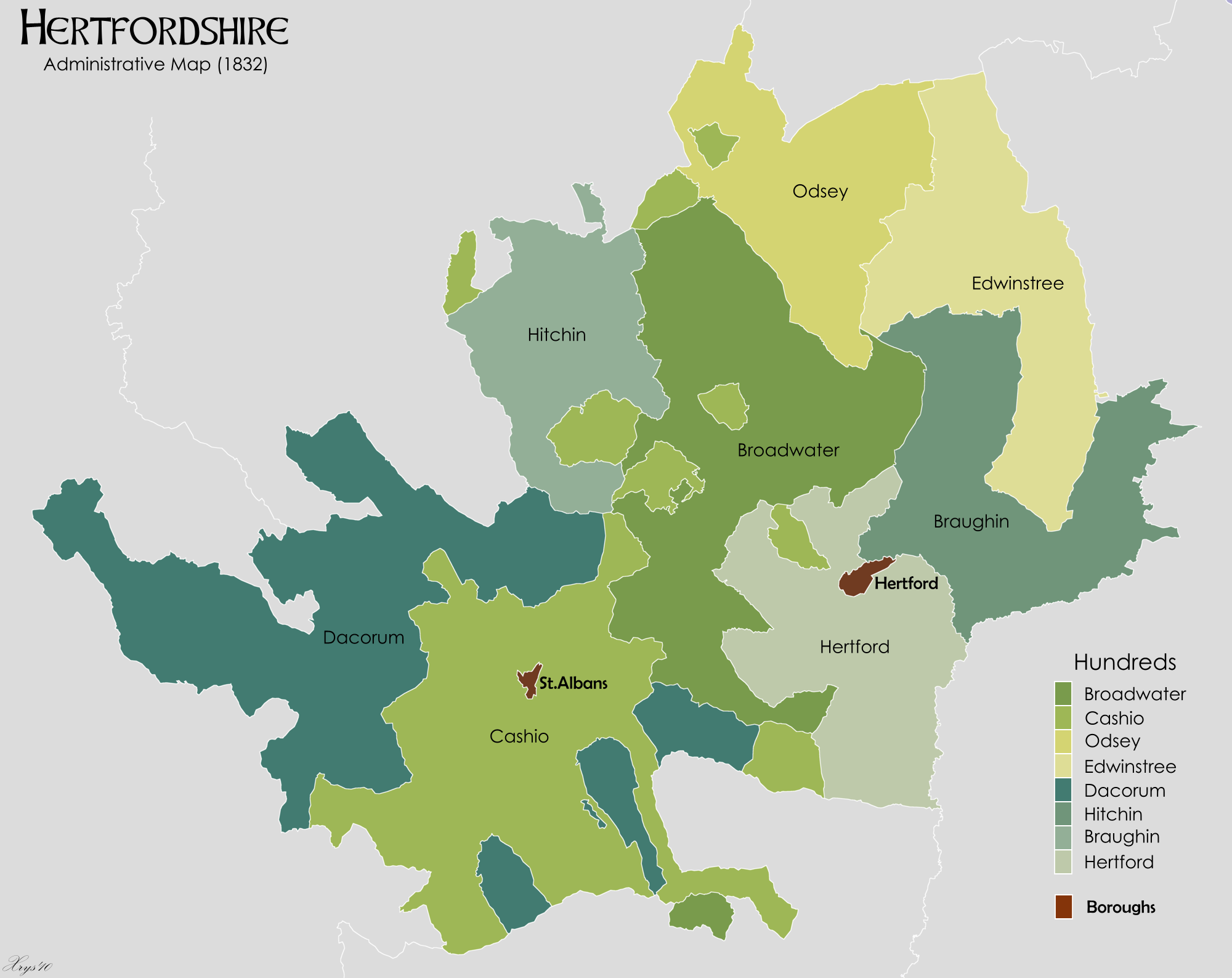|
Hundred Of Cashio
The Liberty of St Albans (also known as the ''Hundred of Albanestou'' or ''Cashio'') was a liberty situated within Hertfordshire, but enjoying the powers of an independent county. At the time of the Domesday Book the liberty was known as ''Albanestou'' and originally had the powers of a hundred. It was originally associated with the Abbey of St Albans, and later with the borough corporation. It was absorbed by Hertfordshire in 1874. The origins of the liberty are unclear, but the abbots of St Albans claimed that the privileges had first been granted by King Offa of Mercia, who founded the abbey in 793. The Liberty appears to have contained parts of the Dioceses of London and Lincoln. Haslam proposes that Cashio and Danais hundreds were originally a larger "proto-hundred" which was originally created to support the burh at St Albans by King Edward the Elder in the 900s to defend against the Danes. The interlocking nature of the two hundreds, together with the unique status of Cas ... [...More Info...] [...Related Items...] OR: [Wikipedia] [Google] [Baidu] |
Liberty (division)
A liberty was an Kingdom of England, English geographic unit originating in the Middle Ages, traditionally defined as an area in which Jura regalia, regalian right was revoked and where the land was held by a mesne lord (i.e., an area in which rights reserved to the king had been devolution, devolved into private hands). It later became a unit of History of local government in England, local government administration. Liberties were areas of widely variable extent which were independent of the usual system of Hundred (country subdivision), hundreds and boroughs for a number of different reasons, usually to do with peculiarities of land tenure, tenure. Because of their tenurial rather than geographical origin, the areas covered by liberties could either be widely scattered across a county or limited to an area smaller than a single parish: an example of the former is Fordington (liberty), Fordington Liberty, and of the latter, the Waybayouse Liberty, Liberty of Waybayouse, both in D ... [...More Info...] [...Related Items...] OR: [Wikipedia] [Google] [Baidu] |
Hitchin (hundred)
Hitchin hundred was a judicial and taxation subdivision (a "''hundred"'') of Hertfordshire, in the east of the county, that existed from the 10th to the 19th century. It was also known as a "Half Hundred" - the total size in the Domesday Book being around 40 hides - and it was also sometimes called "Hitchin and Pirton" and "Ippollyts". It comprised the following parishes: Hitchin, St Ippollyts, Kimpton, Kings Walden, Lilley, Offley and Pirton. Hexton and St Paul's Walden were also part of the hundred until transferred to the Liberty of St Albans before 1286. The hundred court was originally held at Sperberry Hill ("the hill of speech"), in the chapelry of St Ippollyts. It later met in various places including Hitchin, Ippollitts, Kimpton and Pirton. The hundred was owned by the King. Haslam proposes that the hundred was originally part of a larger "proto-hundred" which crossed the Hertfordshire-Bedfordshire border and supported a supposed burh at Hitchin. This proto-hundred wa ... [...More Info...] [...Related Items...] OR: [Wikipedia] [Google] [Baidu] |
Municipal Borough Of St Albans
St Albans () is a cathedral city in Hertfordshire, England, east of Hemel Hempstead and west of Hatfield, north-west of London, south-west of Welwyn Garden City and south-east of Luton. St Albans was the first major town on the old Roman road of Watling Street for travellers heading north and became the city of Verulamium. It is within the London commuter belt and the Greater London Built-up Area. Name St Albans takes its name from the first British saint, Alban. The most elaborate version of his story, in Bede's ''Ecclesiastical History of the English People'', relates that he lived in Verulamium, sometime during the 3rd or 4th century, when Christians were suffering persecution. Alban met a Christian priest fleeing from his persecutors and sheltered him in his house, where he became so impressed with the priest's piety that he converted to Christianity. When the authorities searched Alban's house, he put on the priest's cloak and presented himself in place of his guest. ... [...More Info...] [...Related Items...] OR: [Wikipedia] [Google] [Baidu] |
